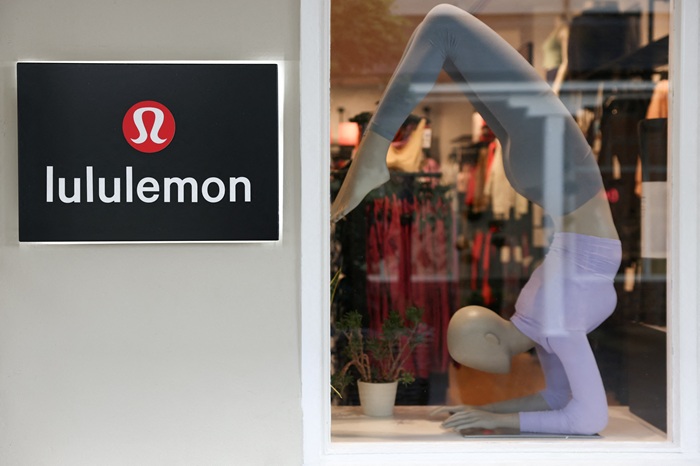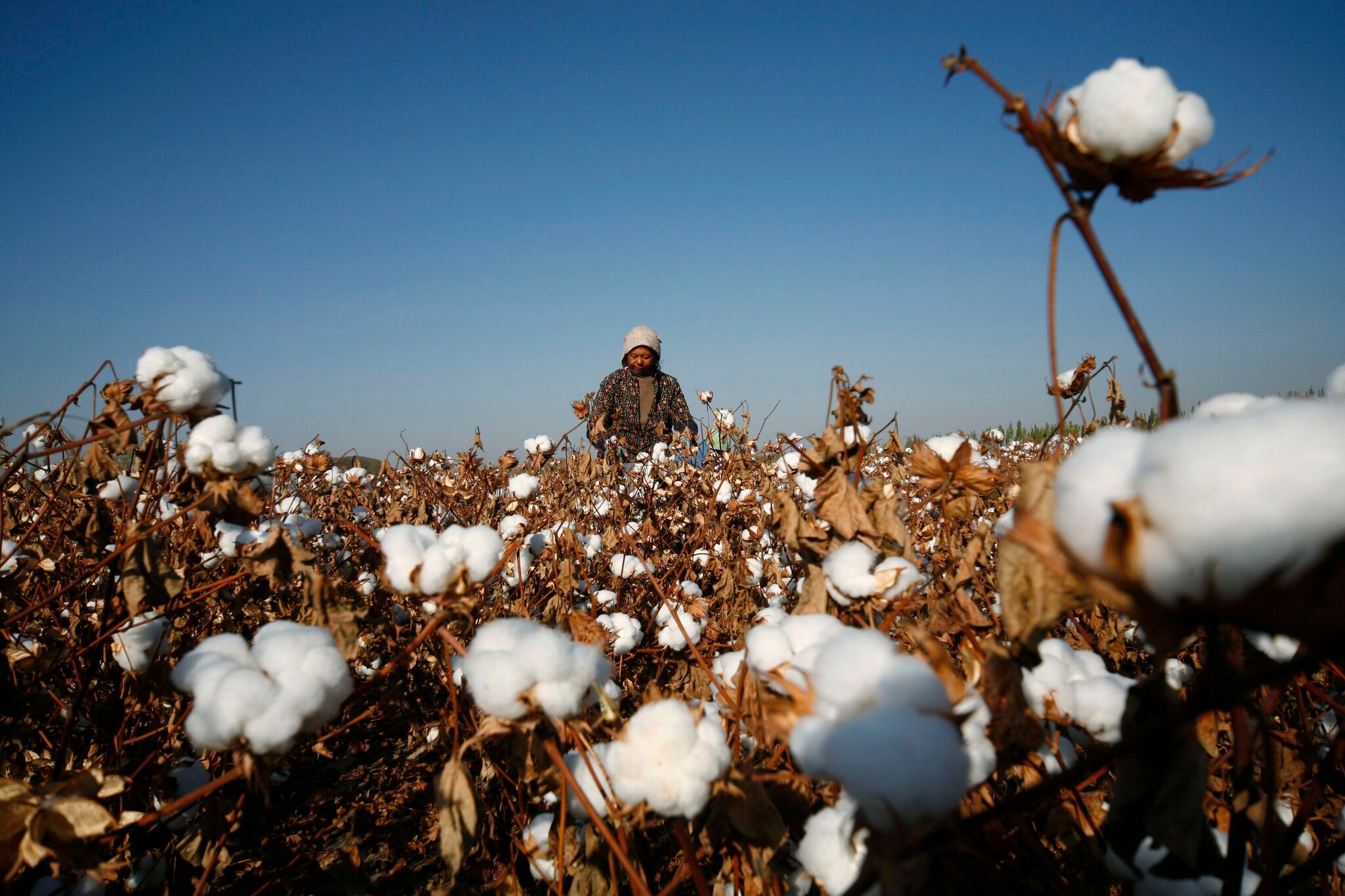FW
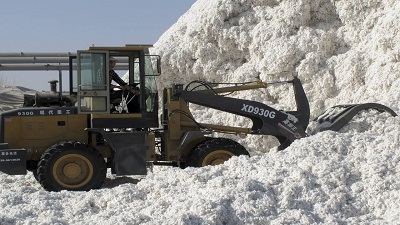
With global cotton prices have plunged in recent weeks, the speculation mounts that China is getting ready to sell some of its 11 million-metric-ton stockpile - enough to make 10 billion pairs of jeans.
According to commodity analysts, China is expected to conduct a cotton auction in the next few months, its first since the end of August. While the government sells nearly all of its cotton at home, it is such a big player in the market that unloading a chunk would depress global prices by reducing how much foreign cotton Chinese businesses buy. China holds about 60 per cent of the world’s cotton stockpiles and is responsible for slightly less than a third of global consumption.
Import restrictions
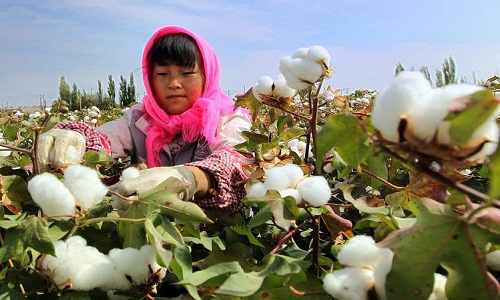
In addition to this, the Chinese government has tightened import quotas for cotton, leading to less global access to that market and a 41 per cent drop in imports in January from a year earlier.
The expectation of a new round of selling by China has pushed down prices on the Zhengzhou Commodity Exchange to their lowest levels since 2004. Meanwhile, the benchmark ICE Futures U.S. exchange has cotton trading near its lowest since 2009, dropping about 12 per cent since the beginning of the year; the May contract settled at 56.41 cents a pound recently.
According to Paul Deane, agricultural commodity analyst at Australia & New Zealand Banking Group, until those Chinese stocks are cleared, it is going to be hard for cotton to break away from current levels, which is bearish on cotton.
Aggressive measures
Meanwhile, the China National Cotton Exchange said it hadn’t been notified of further auctions from the National Development and Reform Commission. The commission was unavailable for comment. However, the U.S. Agriculture Department said there are numerous unofficial indications that the Chinese government intends to pursue a more aggressive reserve stocks-sale programme in the spring and summer of 2016.
During the last year’s July-to-August auction, the National Development and Reform Commission had wanted to sell one million tons of cotton, but fell far short; selling only 63,413 tons, because the price being asked was higher that what most were willing to pay. Global prices have dropped 9.5 per cent since then.
However, much it sells at its next auction, China will lose money. According to the USDA, it bought cotton for the equivalent of $2,950 to $3,200 a ton during a period when the median monthly global price was $2,000 a ton. China sold some of these stocks for an average equivalent price of $2,175 a ton in last year’s auction - a loss of at least 26 per cent on its original investment.
Selling at a lower price
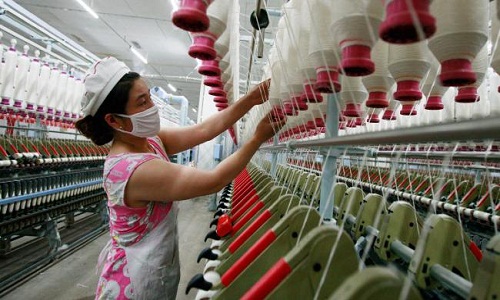
According to a Commonwealth Bank of Australia statement, China will need to set prices lower to sell its stockpiled cotton, bringing it more in line with depressed global prices. If it does sell at lower prices, the USDA predicts China may be able to cut its reserves 13 per cent by July 31 of next year.
One factor putting pressure on China to sell is that cotton deteriorates, so it can’t simply hold supplies for years in hopes the price will rise. The stockpile dates back to a government program introduced in March 2011 to improve the livelihoods of domestic cotton farmers by setting a floor for prices. But with global cotton prices dropping, China chose to store the cotton rather than sell it on the global market.
According to the USDA, the result was a doubling of the world’s stockpiles, which further depressed prices. USDA estimates of cotton stockpiles are slightly above China’s. Said Nick Hungate, global head of cotton at RCMA Commodities Asia Pte, that some of it has certainly deteriorated over time. He said markets have speculated that much of the higher-quality cotton has already been sold and what is left is the lower-grade cotton. China has since ended the price-support program for cotton.
Nishiki is the art of traditional silk weaving in Japan.Nishiki represents the pinnacle of silk as a work of art. It has always been highly revered by the Japanese people and a great source of national pride.
Nishiki is woven on takabata looms. The high precision and skill level required to weave this fabric and the resulting extraordinary beauty and quality demands that it be distinguished from ordinary brocade by giving it a distinctive name, Nishiki.
In the Japanese language, the idiographic character used for Nishiki is a combination of the symbol for woven cloth combined with the symbol for gold, implying that the value of Nishiki is equal to that of money. Nishiki is created through the combined skills of numerous craftsmen, involving a broad range of technical processes that require time and patience.
As the silk threads, each shining like gold, combine with one another, they come to harmonise as a brilliantly colored, dazzling, sublimely created Nishiki creation.
The superb visual-textural feeling of silk’s infinite variations and hues, enhanced through processes cultivated over a millennium, is translated into works of art.
One of the main defining characteristics of Nishiki is that it is woven in layers, creating a three-dimensional effect. The individual translucent silk threads are like glass rods with a slightly rounded, triangular prism shape.
Planet Textiles conference and exhibition reveals the first speakers of a uniquely diverse and influential line-up for four days of textile sustainability events in Denmark in May. Sandwiched between the two-day annual member meeting of the Sustainable Apparel Coalition and the Copenhagen Fashion Summit, Planet Textiles will feature renowned environmentalist, mountaineer and filmmaker, Rick Ridgeway, Patagonia's vice president of environmental affairs. Ridgeway is joined by a high profile cast which includes organisations such as the Chinese National Textile and Apparel Council (CNTAC) which has chosen Planet Textiles to make its first presentation in the European textile market on the new 5-year plan – and how this plan will impact environmental issues in China's textile manufacturing sector to 2020.
Among the other confirmed speakers include senior governmental representation from the German Ministry's Partnership for Sustainable Textiles; the European Clothing Action Plan, which will talk about how to embed a circular economy approach to the European clothing sector; along with initiatives from other leading clothing and retail brands such as VF Corporation – which produces 562 million units of clothing per year from over 30 of its brands, including The North Face, Wrangler, Lee, Timberland and Volcom - to name a few.
Orissa plans to set up an integrated textile park in Bhadrak district with an investment of Rs 70 crores to give a fillip to the textile sector. The proposed park will be developed over 112 acres of land. It is expected to house about 22 apparel manufacturing units.
The integrated textile park scheme launched in 2005 was aimed to encourage private investments and employment generation in the textile sector by facilitating world class infrastructure for common facilities, such as roads, water supply treatment and distribution network, power generation and distribution network, effluent collection treatment and disposal system, design centre, warehouse, first aid centre, etc.
The project cost under the scheme will be funded through a mix of equity or grant from the ministry. The government of India’s support will be limited to 40 per cent of the project cost with a maximum ceiling of Rs 40 crores for parks.
The scheme targets industrial clusters with high growth potential, which require strategic interventions by way of providing world-class infrastructure support. The project cost will cover common infrastructure and buildings for production and support activities depending on the needs of the integrated textile park.
Odisha Industrial Infrastructure Development Corporation is the land acquisition arm of the state.
Assuming Sri Lanka is given back GSP Plus benefits by the European Union, these will be for a maximum of seven years. That’s because Sri Lanka is expected to reach upper middle income country status by end 2016 and GSP Plus benefits don’t apply to this category of countries.
If Sri Lanka reaches the upper middle income country status, and maintains this status for three consecutive years, the country will only be given one more year by the EU before these trade concessions are withdrawn.
Once Sri Lanka is capable of maintaining the required per capita income level the EU would then give one more year for local industries to adjust before withdrawing the trade benefits.
The categorisation of Sri Lanka in the upper middle income country category, even if it happens this year, would take place in two or three years. This would mean that Sri Lanka could enjoy the trade concessions for just seven years if GSP Plus could be re-gained this year.
Sri Lanka enjoyed the EU trade benefits of GSP Plus in 2005 and lost them in 2010 after the country came under the hammer from the EU bloc for violating human rights, among other issues.
Three international exhibitions focusing on textiles and garments will be held in Sri Lanka from March 10.The aim is to highlight the booming Sri Lankan sector and bring in reputed international manufacturers and suppliers.
The textile and apparel industry of south Asia enjoys a key position in the export sector. These exhibitions are expected to display the latest technology that Sri Lanka can adopt in the face of increased competition in the world market.
Exhibitors from over 10 countries will take part in these exhibitions, which are targeted at the entire business community, introducing international technology, machinery and material manufacturers to Sri Lankans under one roof.
The three events are as follows: Textech Sri Lanka 2016 International Expo, an international exhibition on textile garment technology and machinery; Dye+Chem Sri Lanka 2016 Int’l Expo focusing on dyes and fine and specialty chemicals; and Colombo Int’l Yarn & Fabric Show 2016.
The exhibitions are organized by CEMS Global USA, a multinational that launched its operations in Sri Lanka in 2009 as CEMS Lanka. Since its inception in 1992, CEMS Global has marked its presence as a multinational exhibition organiser in south and south-east Asia as well as South America with operations in seven countries. CEMS organises over 40 exhibitions a year on all important sectors of trade and the economy.
The Hong Kong Trade Development Council (HKTDC) unveiled its latest fashion show in Tokyo through a series of fresh initiatives. The event drew fashion experts, buyers, journalists, bloggers and celebrities, as well as the online fashion crowd to view the latest designs of some of Hong Kong’s hottest designers.
The show unveiled the latest Hong Kong designs to an audience of fashion lovers, movers and shakers, buyers, local fashion bloggers, celebrities, as well as representatives from the international fashion media. The collections highlighted Hong Kong’s design diversity. More than 900 attendees got an up-close look of fashion-forward styles, from Loom Loop’s eco-initiatives and Chinese folklore motifs with a fancy twist, to Meiking’s cubic art-meets- architectural cut, and Harrison Wong’s brilliant interplay of lines and stripes to Heaven Please+’s revisit of inventive visuals and ‘90s subculture.
A livestream of the show, organised by the HKTDC and media partner Fashionsnap on its official Periscope, Twitter, Facebook and Instagram platform, drew more than 10,000 views. Hong Kong online fashion retail start-up Goxip also live-streamed the show via its official Facebook account. The collaboration allowed fashion lovers from around the world to purchase items soon after the show.
More than 200 industry elites attended an after-show party to have a closer look of the runway designs and mingle with the creative minds behind the collections.
Lack of long term and affordable funding has continued to affect the competitiveness and productivity of Zimbabwe’s clothing manufacturing sector.
There has been some momentum gained through various support measures which are currently being implement but the gains are likely to be offset by negative effects of the drought, commodity price downturn and the significant devaluation of currencies across the region. So not much growth is expected in 2016. Sustained shortage of long term finance continues to affect the industry’s recapitalisation efforts.
The clothing sector can improve only with significant investment into capital equipment and raw materials. There is a possibility of growth in the sector if more focus is put on local procurement from the government, private sector and consumers.
In 2015, the clothing industry which manufactures clothing from fabric had a mixed performance with some significant successes, but also some failures. It is estimated to be operating at about 35 per cent overall.
The textile industry is currently operating at about 15 per cent capacity. The textile industry faces the same challenges as the clothing sector but requires a greater amount of investment. But within textiles the infrastructure is mostly still in place from prior periods of better performance, so it relatively simple to get it working again.
The Vietnam Textile and Apparel Association (Vitas) denied the recent local newspaper reports that that Cambodia had surpassed Vietnam in garment and textile exports to the European Union (EU). This was incorrect, said the association and added that this was caused by a misunderstanding about statistics of the EU's imports of garment products that the association published recently.
The figure was about imports of garment products of the EU in 2015 (code HS61 and HS62) but was mistranslated that it included imports of both textile and garments products (with code ranging from HS50 to HS63). According to Vitas, Vietnam's exports of garment and textile products of Vietnam in 2014 and 2015 was 2.53 billion Euros (USVND61, 304 billion) and 3.13 billion Euros, respectively. Cambodia's figures were 2.26 billion Euros and 2.97 billion Euros, respectively.
The garment and textile export revenue of Vietnam remained higher than Cambodia; although the latter enjoyed a zero tax rate following the Everything But Arms, part of the EU Generalised System of Preferences while the tax rate on Vietnam's exports was 9.6 per cent.
The association said that in the short-term, garment and textile exports of Cambodia to the EU might move closer to Vietnam's thanks to a more preferential tax rate.
A textile exhibition, organized by Surat Dreams is being held in Greater Noida, March 5 to 6, 2016.The event also showcases a high profile fashion show where top models from the fashion fraternity will adorn latest ensembles from the ethnic couture.
With 108 textile manufacturers from across India, the fashion exposition is set to witness the participation of 2500 domestic buyers and 500 international buyers from the UK, USA, Bangladesh, Pakistan, South Africa and the Gulf countries.
The aim of this exhibition is to promote Indian textile brand value all over the world. The exhibition generates an excellent opportunity for manufacturers and buyers in developing business relations.
The event brings the latest trends in fashion with the perfect blend of traditional and modern western culture. The hope is to generate a profitable business relation with the international market and boost the ethnic art and culture of India. The target is to sign MOUs of around Rs 1000 crores.
Since this year there's a bigger focus on foreign buyers, one exhibitor from Kolkata is showcasing a fusion of Indo-western products and digital prints in saris, suits and kurtis. For instance the Indian sari has been redone with half print, half crushed, geometrical and flowers patterns.






